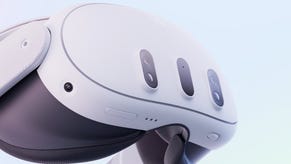Cell to drop to 65nm manufacturing process in '07
Sony Computer Entertainment boss Ken Kutaragi has revealed one of the first steps in Sony's plan to cut the costs of the PS3 post-launch - with a move to a better manufacturing process for Cell on the cards for 2007.
At launch, the Cell microprocessor - which was co-created by Sony, Toshiba and IBM - will be manufactured at a 90nm process at IBM's Fishkill plant in North America and Sony's new Nagasaki plant, but at some point next year this will move to a 65nm process.
The number refers to the size of components on the chip; smaller components are more technically challenging to fabricate, but ultimately more efficient and less expensive, as well as producing chips which take up less space.
The change would make no difference to gamers, of course; Sony has traditionally redesigned the interior of its consoles repeatedly throughout their lifespan without ever affecting the gaming experience on the systems.
Kutaragi revealed Sony's 65nm plan to Japanese site Impress Watch in an interview this week, where he also discussed the firm's plans to produce less powerful versions of the Cell for use in other products.
The Cell used in PS3 will boast eight processing units (SPEs), of which seven will be accessible (the eighth is turned off to help boost manufacturing yields of the processor). According to Kutaragi, other versions of the chip - which could be used in devices such as TVs and Blu-Ray players - may use just two SPEs.








